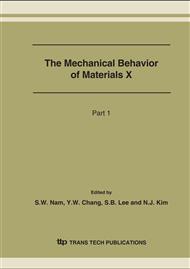p.1453
p.1457
p.1461
p.1465
p.1469
p.1473
p.1477
p.1481
p.1485
Influence of the Welded Joint on the Mechanical Behavior of Steel Piles during Static and Dynamic Deformation
Abstract:
During manufacturing the welded joint of steel structures, residual stress is produced and weld metal is used inevitably. And residual stress and weld metal influence on the static and dynamic mechanical behavior of steel structures. Therefore, to predict the mechanical behavior of steel pile with a welded joint during static and dynamic deformation, the research on the influence of the welded joints on the static and dynamic behavior of steel pile is clarified. In this paper, the residual stress distribution in a welded joint of steel piles was investigated by using three-dimensional welding analysis. The static and dynamic mechanical behavior of steel piles with a welded joint is investigated by three-dimensional elastic-plastic finite element analysis using a proposed dynamic hysteresis model. Numerical analyses of the steel pile with a welded joint were compared to that without a welded joint with respect to load carrying capacity and residual stress distribution. The influence of the welded joint on the mechanical behavior of steel piles during static and dynamic deformation was clarified by comparing analytical results
Info:
Periodical:
Pages:
1469-1472
Citation:
Online since:
August 2007
Authors:
Price:
Сopyright:
© 2007 Trans Tech Publications Ltd. All Rights Reserved
Share:
Citation:


